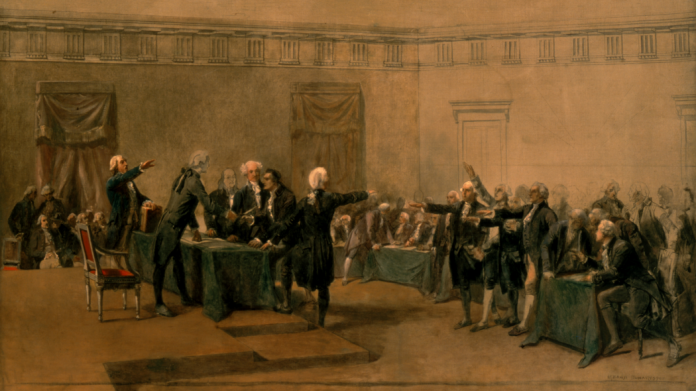One-sided debt ceiling debate ignores the fact both Republicans and Democrats propose spending more, and increasing the federal debt.
If we spend more than 17.4 percent of GDP on a regular basis the nation will continue hurtling ever-faster toward the dreaded default. But, of course, that will be someone else’s
mess to clean up.
There are currently two positions on the federal debt ceiling. Or one, if you want to be accurate.
The debt ceiling is the total amount of money the federal government is allowed to borrow. Every time the nation’s bills approach the limit, it sets off a big debate because if you cannot lift the debt ceiling and go into greater debt, you will have to raise taxes or cut spending. Obviously, those scenarios horrify government officials, who love to throw huge sums of money at practically every problem they encounter.
The Congressional Budget Office says the government coffers will go empty sometime between July and September. The White House wants a clean hike of the debt ceiling before then, and Joe Biden and his team would prefer that it be eliminated permanently. Whatever Congress and the president want to spend, they should not have to raise taxes for it, the thinking goes.
This is in accord with modern monetary theory, the idea that government spending stimulates the economy and tax increases are supposed to fight inflation. As Mises Institute President Jeff Deist notes, this means “sovereign government treasuries can create and spend as much money as they like to stimulate growth, especially when the economy is underperforming. If inflation spikes, taxes can be imposed to take money out of the economy.”
Biden and the congressional Democrats present current spending levels as inviolate and argue that any cuts will be disastrous for the American people. Federal spending has increased from 20 percent of GDP in 2015 to approximately 25 percent now. If you remember the mass poverty, starvation, and homelessness the nation suffered in 2015, you can understand why Biden is so staunch in his refusal to cut federal spending. (Note: sarcasm employed in the preceding.)
Here’s the rub: federal revenue has hovered around 17.4 percent of GDP for the past half-century, no matter what the tax rates have been. Debt is essential if you are going to spend more than that—and especially if you want to spend 7 percentage points more of GDP than the norm, in perpetuity. Meaning, especially if you are wildly irresponsible.
Congressional Republicans say the federal government is spending too much money, which of course it is, and that the approach of the debt ceiling is a rare opportunity to wrench some concessions from the Democrats to slow the rise of government spending from supersonic speed to about 99 percent of whatever the Democrats want.
A supposedly devastating argument given for these increases in the debt ceiling, however, is the prospect of default on federal government debt, which is presented as a catastrophe. Americans need to make sure the government will continue to be able to borrow however much money Congress and the president see fit to spend, at a reasonable interest rate, the story goes. If we default on our debt, people, institutions, and other governments will be reluctant to lend the government money at bargain rates.
Like the government, I would prefer to be able to borrow money in perpetuity at an interest rate I feel I can afford. In the real world, we refer to such an endeavor as a Ponzi scheme. When the government does this, by contrast, it is for our own good, so it’s OK.
Outspoken congressional Democrats are urging Biden to hold the line—not on spending, of course, but on his stated refusal to discuss giving Republicans some minor and surely very temporary spending cuts in trade for debt ceiling “relief.” I will not feel much relief upon hearing the federal government is borrowing more money, nor should anyone under the age of 40, but the spenders are referring to their own feelings, not those of current and future taxpayers.
The congressional Republican leadership argues, correctly, that the debt is caused by overspending, and thus this is a good time to discuss some cuts (other than to Social Security and Medicare, which comprise 31 percent of the federal budget). The Republicans say they will agree to authorize the government to take on more debt if Democrats consent to a marginally smaller load than they would like.
The Congressional Budget Office projects the federal debt under current obligations will increase to $46.4 trillion a decade from now. The Republicans are pressing for less new debt over the next decade. We are supposed to believe that’s a bold stance.
There is, in fact, only one position on federal spending being offered by either party: increasing it. The argument is strictly over how rapidly to accelerate the money train. Until lawmakers are willing to accept the fact that they cannot spend more than 17.4 percent of GDP on a regular basis, the nation will continue hurtling ever-faster toward the dreaded default.
But, of course, that will be someone else’s mess to clean up.
Originally published by American Greatness. Republished with permission.
For more great content from Budget & Tax News.











